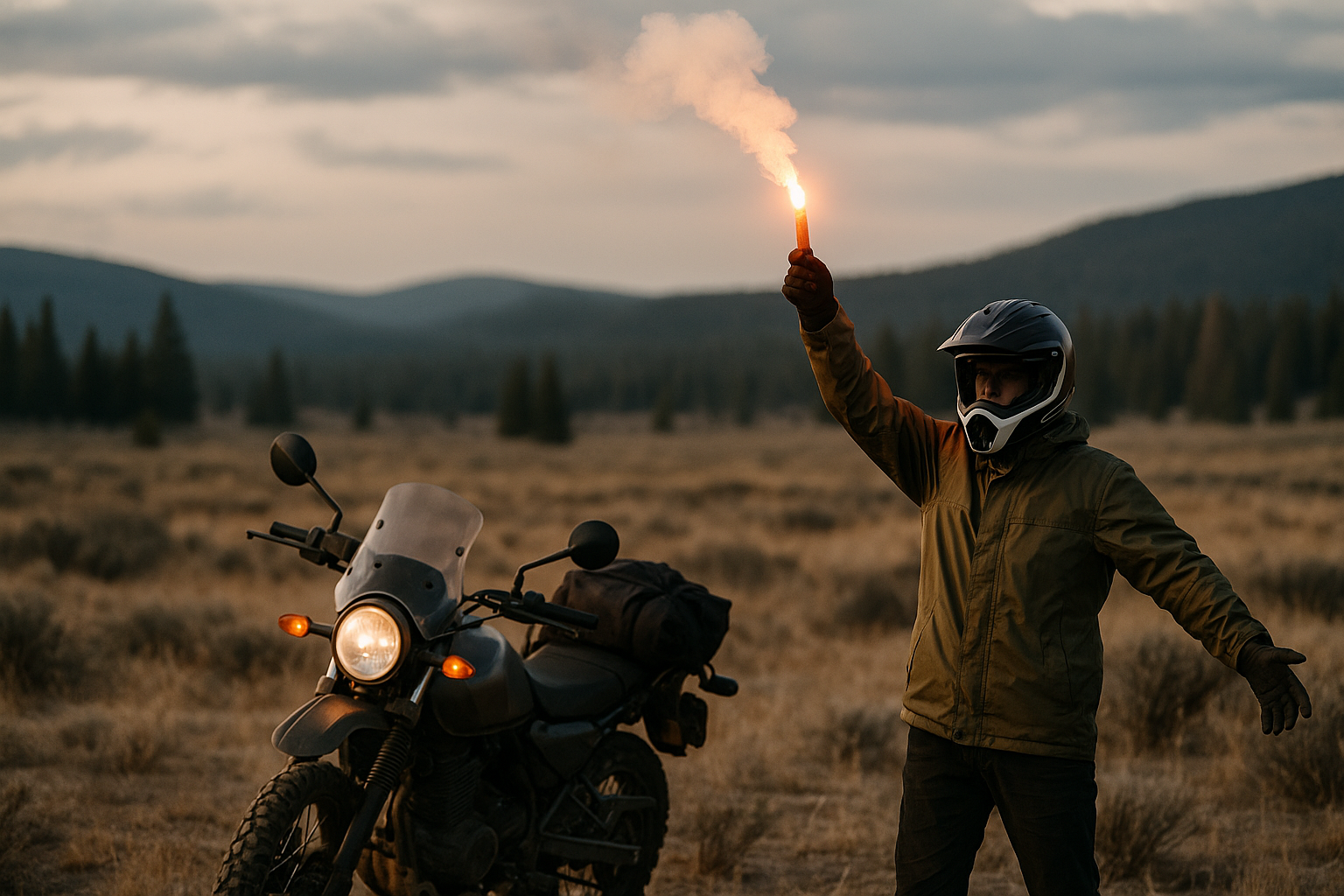You’re miles into the wilderness, and the unthinkable happens. Your motorcycle breaks down, your GPS has no signal, and there’s no cell service for miles. As night creeps in, you realize you’re truly isolated. Panic isn’t an option—action is. When every minute counts, knowing how to signal for help in unconventional ways could mean the difference between rescue and being stranded for days. Let’s explore field-tested, ingenious methods for drawing attention, even in the middle of nowhere.
Improvised Signal Mirrors from Everyday Gear
Don’t have a signal mirror? Make one.
- Use a shiny metal surface, like a polished cook pot, watch face, or even a smartphone screen.
- Angle the mirror toward the sun, creating flashes of light visible from long distances.
- Create movement by tilting the mirror back and forth, making the reflection “dance.”
- Aim for high vantage points like hilltops or clearings to maximize visibility.
Pro Tip: Use your fingers as a sighting tool—align your mirror’s reflection with a distant object (like a helicopter or hill) for precise aiming.
DIY Signal Fires (When Allowed)
If open flames are permitted:
- Build three small fires in a triangle, the international distress symbol.
- Use green wood or wet foliage to create smoke plumes visible from afar.
- Keep a controlled burn—don’t let it spread, and be prepared to extinguish if needed.
Pro Tip: Avoid fire if conditions are unsafe—rescue isn’t worth causing a wildfire.
Vibrant Gear as Passive Signals
Your high-vis gear isn’t just for the road:
- Lay out brightly colored items (like a tent rainfly, jacket, or sleeping bag) in an open clearing.
- Arrange items into shapes, such as an “X” or “SOS” visible from the air.
- Use reflective or metallic gear, which can catch sunlight and attract attention.
Flashlight Signaling: Beacons in the Night
- Use a high-lumen flashlight or headlamp to flash SOS: three short, three long, three short.
- Wave the light in slow arcs to draw attention in low-light conditions.
- Attach the light to a stick or tree, turning it into a fixed beacon.
Pro Tip: Preserve battery by using low or strobe settings—save high beams for active signaling.
Whistle Codes: Audible Distress
- Carry a pea-less whistle—it works even when wet or frozen.
- Blow three short blasts, pause, then repeat. This pattern is recognized as a distress signal.
- Echo-friendly: Whistles carry farther than shouting and don’t strain your voice.
Ground Signals Using Natural Materials
- Create large patterns on the ground using rocks, logs, or scraped dirt.
- Shape symbols like “X,” “HELP,” or arrows pointing to your location.
- Make the pattern at least 3 meters wide for visibility from the air.
Pro Tip: Contrast is key—use light materials on dark ground or vice versa.
Stealthy Low-Profile Signaling
In areas where you need to avoid drawing attention from potential threats:
- Use infrared (IR) reflectors on your bike or gear, detectable by search teams with night vision.
- Place low-power LED strobes in a hidden location, visible only from specific angles.
- Leave subtle ground markers (like stacked rocks or tied twigs) to guide trusted rescuers.
Radio Hacks with Minimal Gear
Even without a proper radio, you can amplify reach:
- Use your bike’s wiring as an improvised antenna, connecting a wire to a metal frame.
- Try tuning emergency channels on any available radio device (including weather radios).
- Transmit short, clear messages, such as location coordinates or landmarks.
Reflective Movement in Sunlight
- Tie a reflective object (like foil or a CD) to a branch and let it sway in the breeze.
- Hang multiple reflective items at different heights, creating a moving signal.
- Use contrasting colors to draw attention against natural backgrounds.
Signal with Sound Beyond Whistles
- Bang pots, metal gear, or fuel canisters together in a rhythmic pattern.
- Tap large rocks with sticks to create hollow, far-reaching sounds.
- Avoid continuous noise—make distinct patterns that stand out.
Pre-Trip Prep for Smart Signaling
- Pack a compact signal mirror, whistle, and reflective tape.
- Carry a small, high-output strobe or flare.
- Pre-learn local emergency numbers and save them in a waterproof pouch.
Field-Tested Gear That Can Save You
- ResQLink Personal Locator Beacon (PLB): Compact, rugged, and sends your location via satellite.
- SOL Rescue Flash Signal Mirror: Visible over 20 miles in sunlight.
- Fox 40 Whistle: Loud, durable, and works in all weather conditions.
- UCO Strobe or Glowstick: Lightweight, reliable, and visible at night.
Conclusion: Stay Visible, Stay Found
Getting lost during a motorcycle camping trip is a nightmare, but it doesn’t have to turn into a disaster. By thinking creatively and acting fast, you can turn ordinary gear into lifesaving signals. Whether you use sunlight, sound, or movement, these strategies keep you connected to the outside world—even in the most remote wilderness. So when you’re out there and it feels like no one’s watching, remember: there’s always a way to get noticed.

